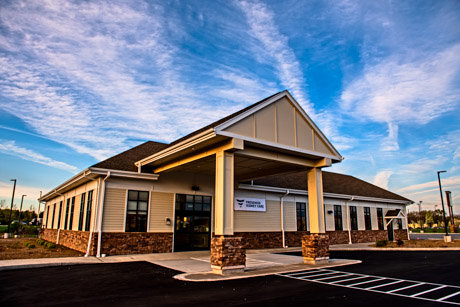New business course offered at GCC this fall -- Public Procurement
Press release:
Registration for the fall semester is still open at Genesee Community College, and there is a brand-new course available -- Public Procurement -- listed as course BUS194.
Available completely online, this course was developed and will be taught by Eve Hens, who is the purchasing director for Genesee County, and also a Certified Professional Public Buyer with an MBA in Project Management.
The course is the first and only online Public Procurement class offered in Western New York.
It will introduce public procurement principles and relevant applications, and integrate concepts from a legal, ethical and documentation perspective as well as include the latest best practices in this field. NYS public procurement policies and procedures will be the focus of this course.
The purchasing function, in any industry, is critical to the global supply chain and this course has been designed to prepare individuals looking to enter or advance in that role -- whether in the public or private sectors.
Government procurement accounts for a substantial part of the global economy and therefore, Public Procurement (BUS194) also serves the small and large business owner interested in contracting with the government for goods or services by providing a solid understanding of the applicable procurement concepts, processes and procedures.
As an online course, BUS194 offers maximum flexibility and convenience, requires no prerequisites, and can be taken as an elective as part of an academic degree program or on its own to bolster knowledge or advance careers.
This coursework and information can readily be applied to a broad range of industries such as retail, healthcare, construction, government, technology, manufacturing, film making and more. And with the median wage of a procurement officer being $32 per hour according to the U.S. Bureau of Labor-it also provides a sound career choice.
Additionally, in some businesses, it is a position that allows the employee to work remotely; in some cases from home.
"As Baby Boomers continue to retire in large numbers, the Public Procurement industry is anticipating more and more employment opportunities," said Lina LaMattina, Ph.D., professor and director of GCC's Business Program. "Students in any of GCC's business programs would also benefit from this Public Procurement elective, as they further prepare to enter the workforce."
GCC's semester starts Monday, Aug. 19, at GCC.
To learn more about BUS194 or to enroll in the course, go to https://www.genesee.edu/courses/schedule/.
The Business and Commerce division at GCC also offers the following 11 different degree programs including: Business Administration with concentrations in Supply Chain Management or Marketing and Social Media; Accounting; Business Administration; Economic Crime Investigation; Entrepreneurship; Tourism and Hospitality Management; and four concentrations in Fashion Business, including E-Commerce, Event Planning, Fashion Design, Fashion Merchandising Management and Office Technology.
"As companies continue to require their employees to perform a broader and broader array of tasks and wear multiple hats in the workplace, an individual with knowledge of the public purchasing function will add immense value to their professional resume," LaMattina said.
















